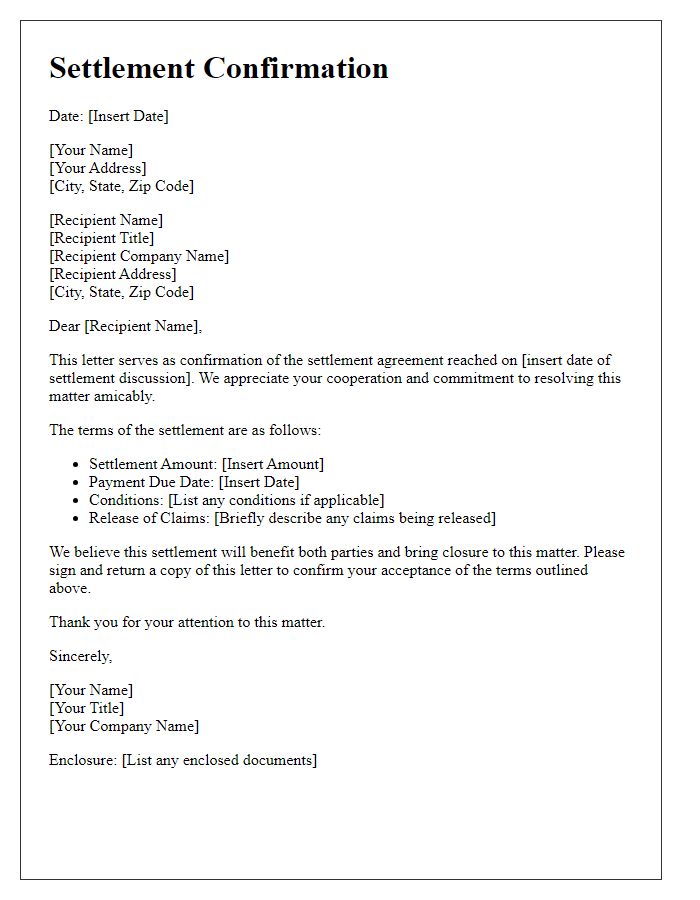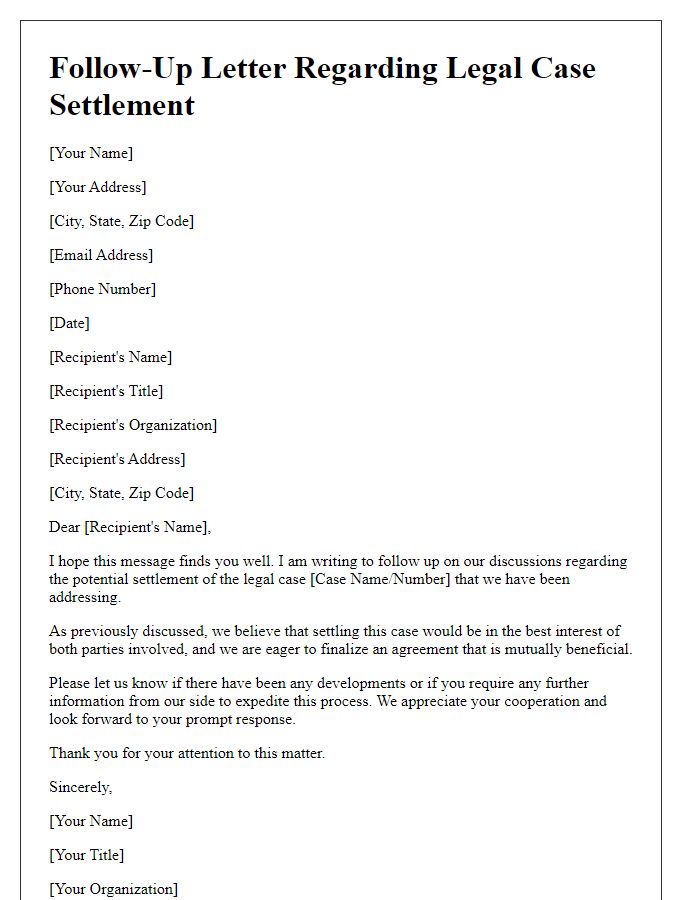Are you currently navigating the intricacies of a legal case and looking to reach a favorable settlement? Crafting a well-structured letter for negotiation can make all the difference in your case. In this article, we'll guide you through the essential elements to include in your settlement negotiation letter, ensuring you communicate your position effectively. So, if you're ready to enhance your negotiation skills and achieve a successful resolution, keep reading!

Clear Subject Line
In the pursuit of a legal case settlement negotiation, establishing a clear and concise subject line for correspondence is essential. A subject line such as "Proposal for Settlement Discussion: Case No. 12345" efficiently communicates the focus of the email. This identifies the specific legal matter involved, represented by its unique case number, streamlining communication for all parties engaged in the negotiation process. It highlights the intention to discuss potential resolutions, enhancing clarity and prompting timely responses. Properly framing the subject increases the likelihood of a structured and productive dialogue towards an amicable settlement.
Concise Introduction
In legal case settlement negotiations, effective communication is crucial to achieving a favorable outcome. A concise introduction is vital in establishing context and setting the tone. Begin with a clear statement of the case name, including key entities involved, such as Plaintiff Jane Doe and Defendant ABC Corporation, along with the case number (e.g., Case No. 12345). Highlight the primary legal issues at stake, like breach of contract or negligence, specifying any relevant laws or statutes, such as California Civil Code SS1542. Incorporate details about the jurisdiction, such as Los Angeles County, which may influence the negotiation process. Acknowledge the goal of the negotiation: to reach an amicable settlement that mitigates further costs and time associated with litigation. This initial clarity lays the groundwork for the discussions that follow, fostering a productive dialogue.
Statement of Facts
In a recent legal case involving a property dispute on Elm Street, the plaintiff, Mr. John Smith, filed a complaint against the defendant, Ms. Jane Doe, regarding unauthorized construction activities that began in March 2023. The property in question, a residential duplex built in 2010, is located adjacent to Ms. Doe's recently purchased lot. Mr. Smith claims that the construction violates local zoning regulations set by the City of Springfield, as it encroaches on his property line by approximately 15 feet, creating a potential safety hazard and diminishing his property's market value by an estimated 20,000 dollars. Documentation submitted includes photographs taken in April 2023 showing the construction's progress and an official report from the Springfield Zoning Board dated May 2023, confirming the violation of zoning laws. Mediation efforts initiated in June 2023 remain unresolved, thus necessitating further negotiations to settle the matter amicably.
Proposed Settlement Terms
Legal case settlement negotiations often require clarity and detail in the proposed settlement terms. For example, the compensation amount may be specified, such as $50,000 to cover medical expenses and lost wages incurred due to the incident. Additionally, timelines must be established, like a 30-day period for payment following the agreement. Non-disclosure clauses may also be included, preventing parties from disclosing case details to the public or media. Moreover, a comprehensive liability release can ensure no further claims arise from the incident, protecting both parties. Lastly, specifying jurisdiction, such as the state of California, can clarify where any disputes related to the settlement will be resolved, resulting in a smoother negotiation process.
Closing and Call to Action
Negotiating a legal case settlement requires clear communication and a compelling closing message to encourage action. A powerful conclusion can summarize points for consideration and urge the receiving party to respond promptly. Highlighting critical details like timelines or specific terms for resolution can create urgency. Mention the importance of collaboration to reach a mutually beneficial solution. Encouraging quick communication emphasizes commitment to resolution, fostering goodwill in the negotiation process. Ultimately, a strong call to action invites the other party to present their counteroffer or to arrange a follow-up discussion, reinforcing the desire for constructive engagement.













Comments